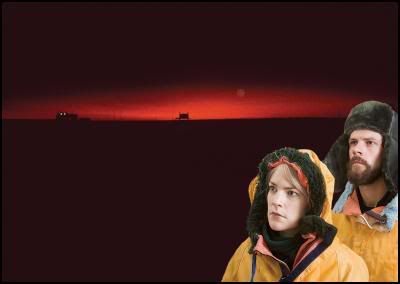Written by Kiwi playwright Lynda Chanwai-Earle and produced with enviromentally sustainable resources, it tells the story of a husband and wife scientists who spend a winter in a remote science station in Antarctica, in complete isolation, while studying the environment and a colony of emperor penguins. The experience is supposed to help them heal from the death of their child.

As the long, dark winter comes, claustrophobia and isolation cause their relationship to deteriorate, bringing to the surface their hidden guilt and resentment. Moreover, the wife develops an obsessive attachment for one of the penguins, who has been rejected by the community: she literally adopts him and takes him to live with them. He becomes a substitute for the loss child, but also, incredibly, almost a lover.
The relationship between the couple of the penguin is both the most comedic and the most tragic element of the play, bizarre, yet strangely touching at the same time. The bird/fish is played by an extraordinary actor, Brian Hotter, whose only costume/prop is the paint that covers his otherwise naked body.
While the couple constantly talk to keep themselves from drowning in their sorrow and loneliness or from being overwhlmed by the terrifying beauty of the Antarctic landscape, the penguin communicates through gestures and movements. At the end he becomes the sacrificial victim that allows the couple to reconnect (a little too abruptly in my opinion).
Not a masterpiece by any means and it could have seriously done with some editing, but I found the detailed set reproducing Antarctic base very intrguing, a perfect match for the technological, scientific language that is naturally incorporated in the dialogue. And Gareth Farr's soundtrack suggests the presence of the vast, open space of ice that lies beyond the fourth wall, where the audience sits.
No comments:
Post a Comment